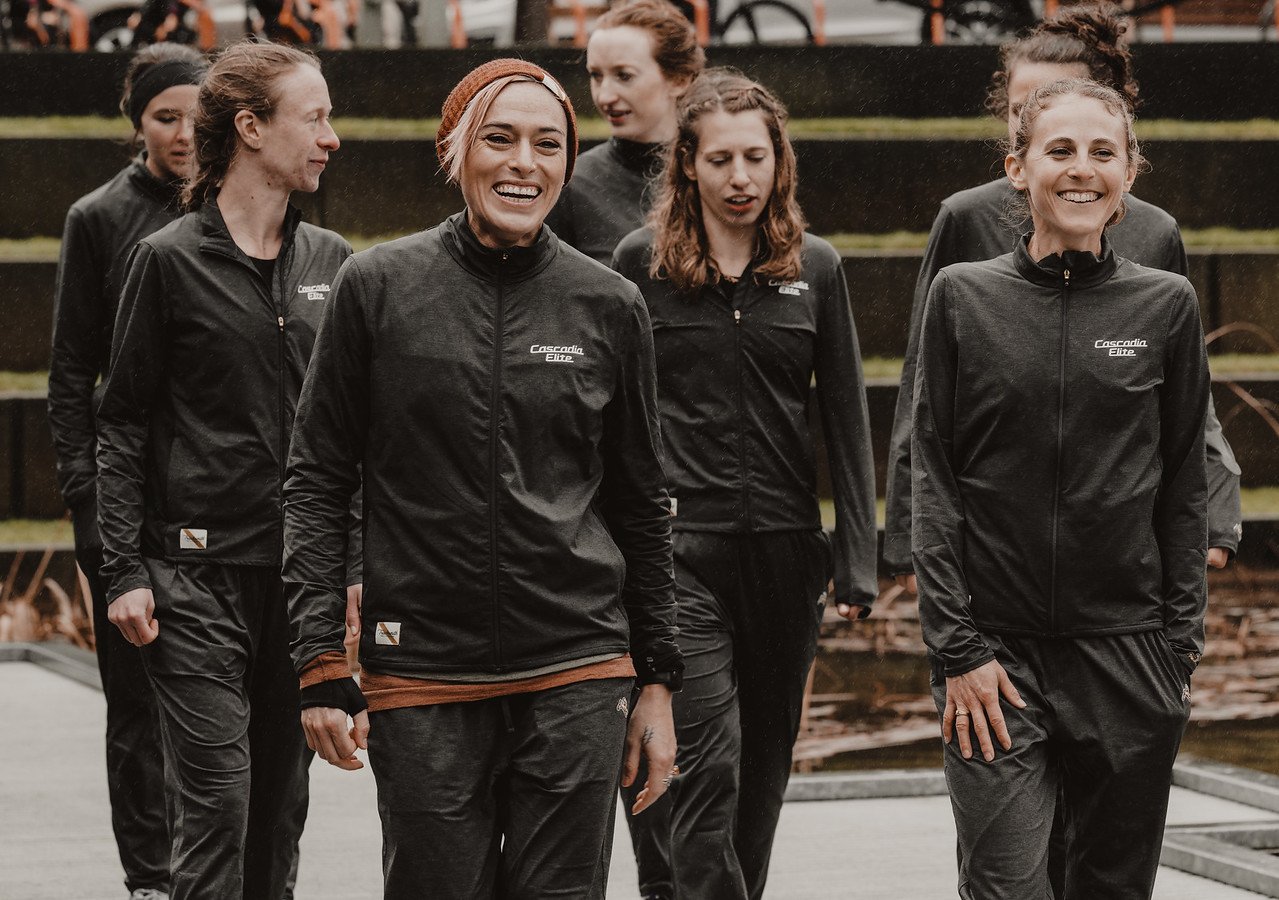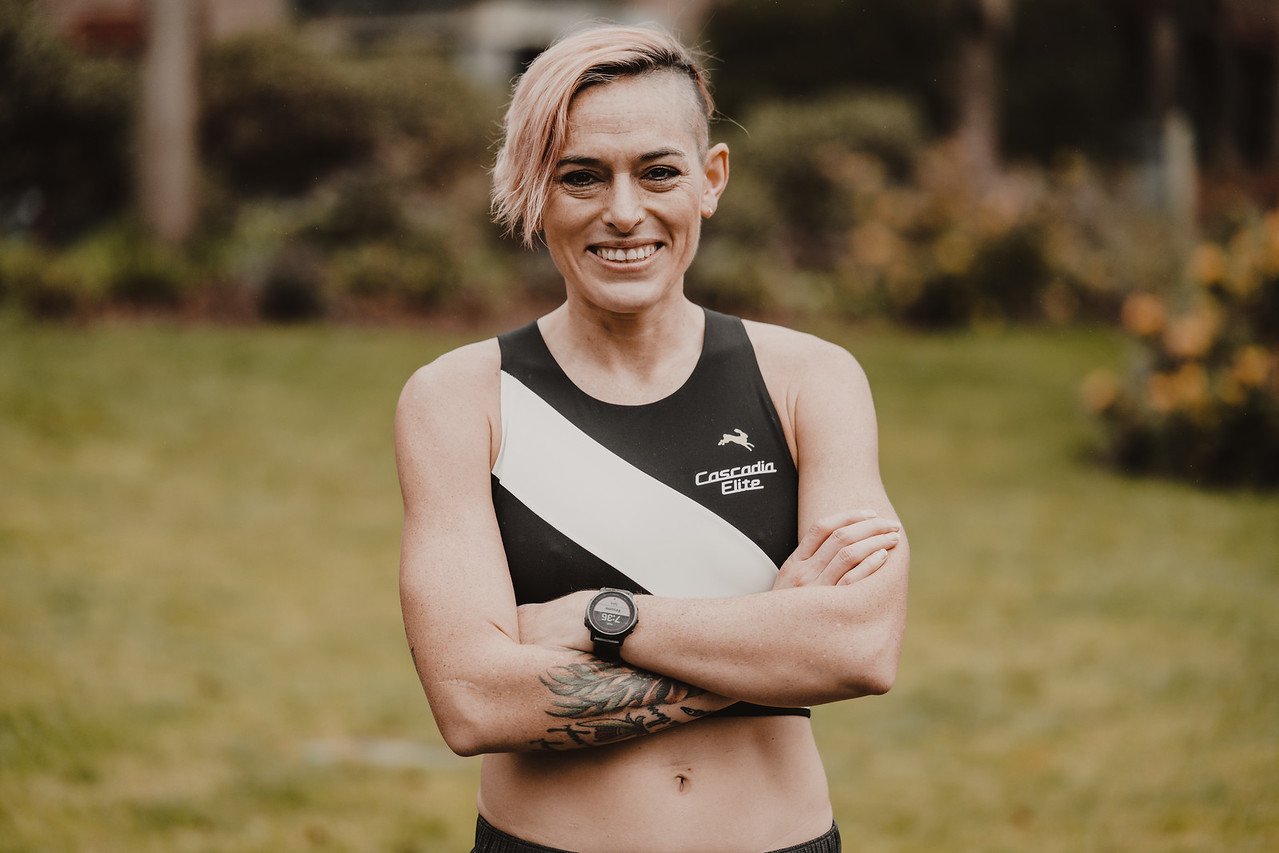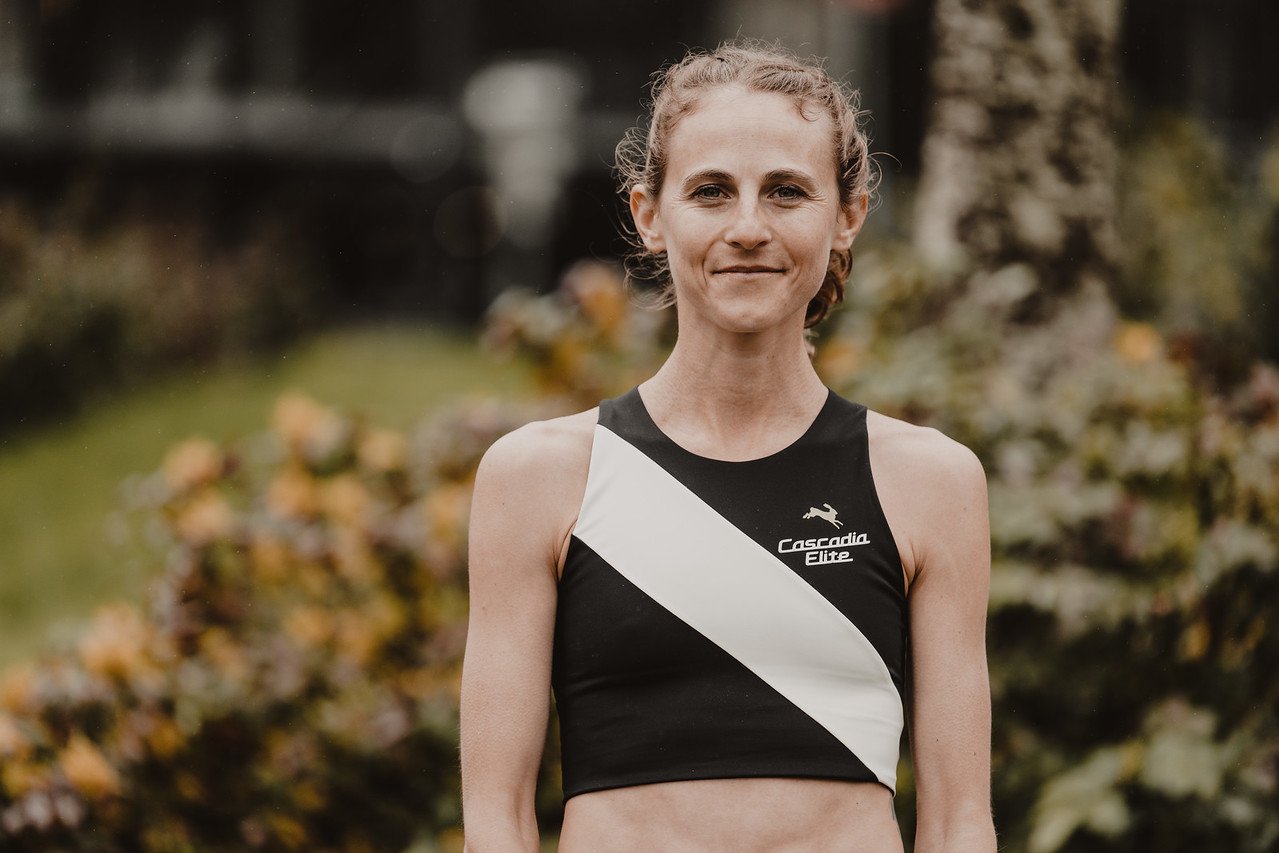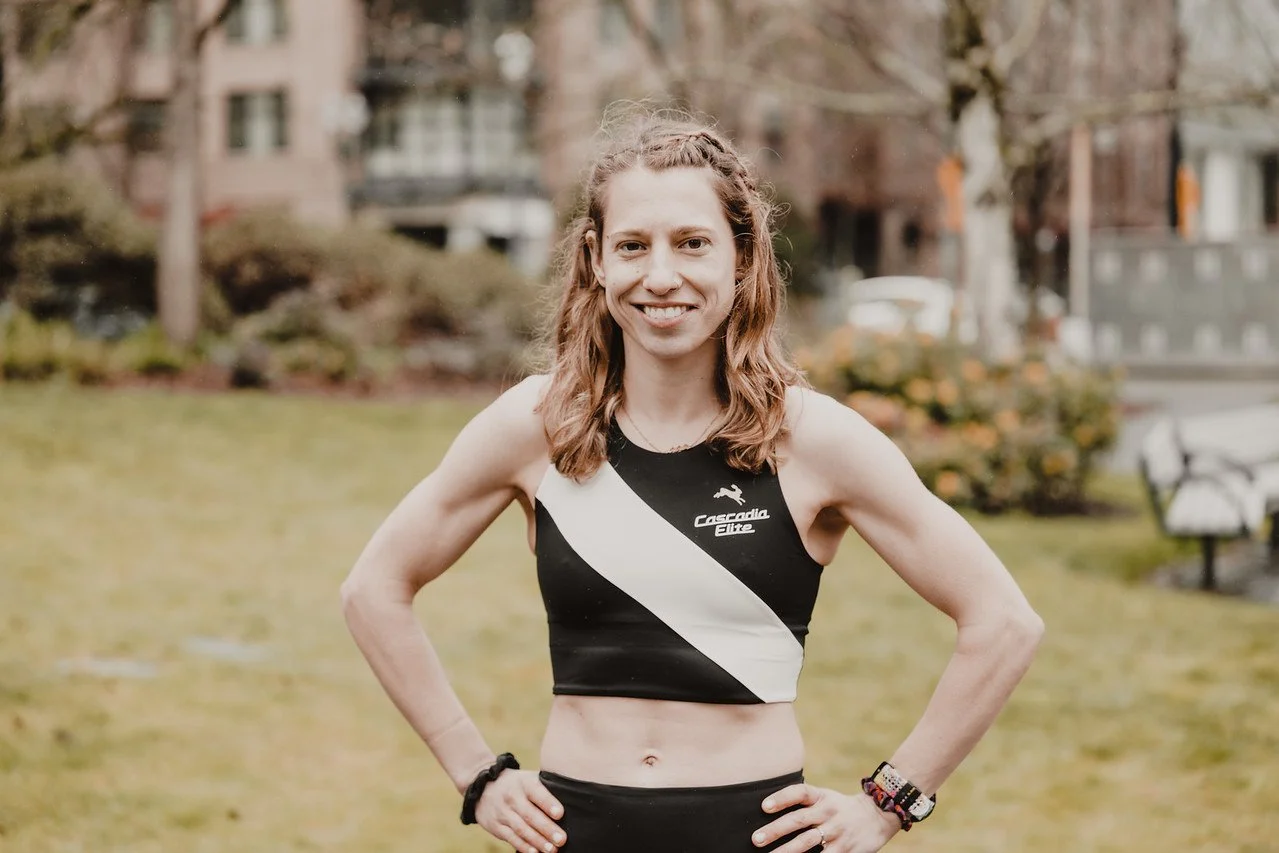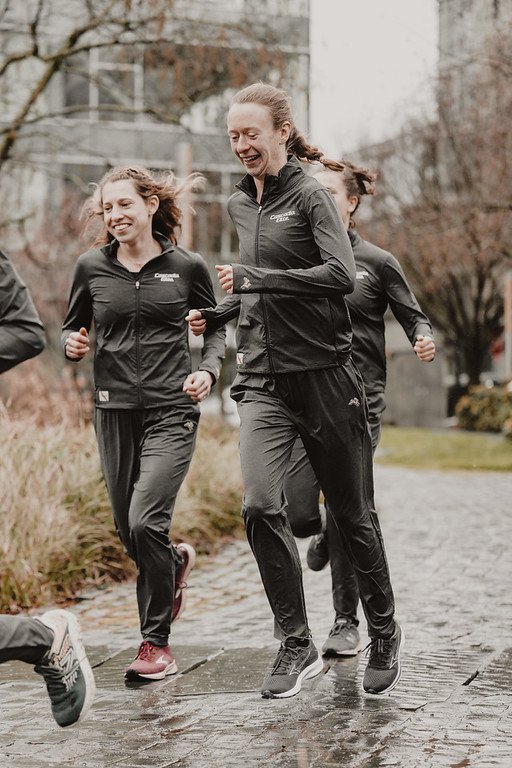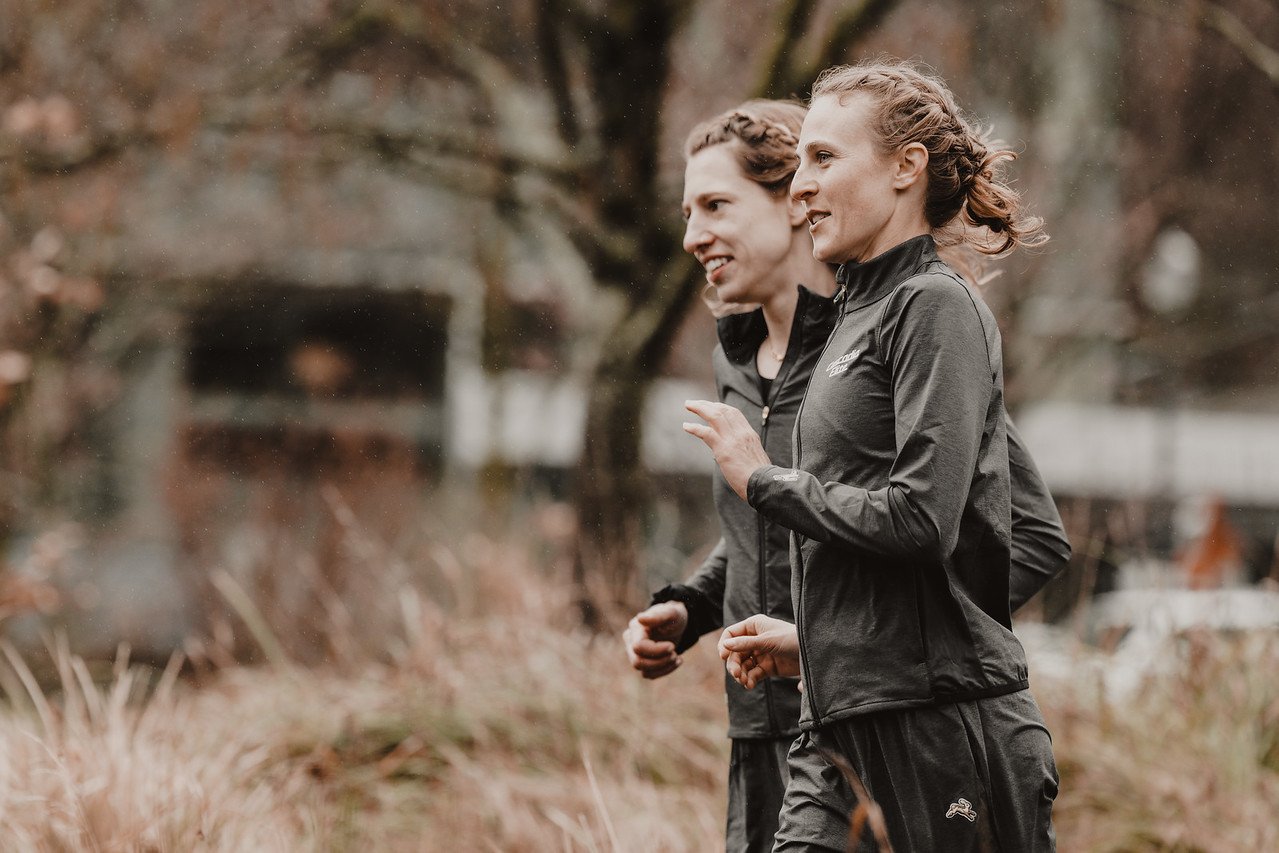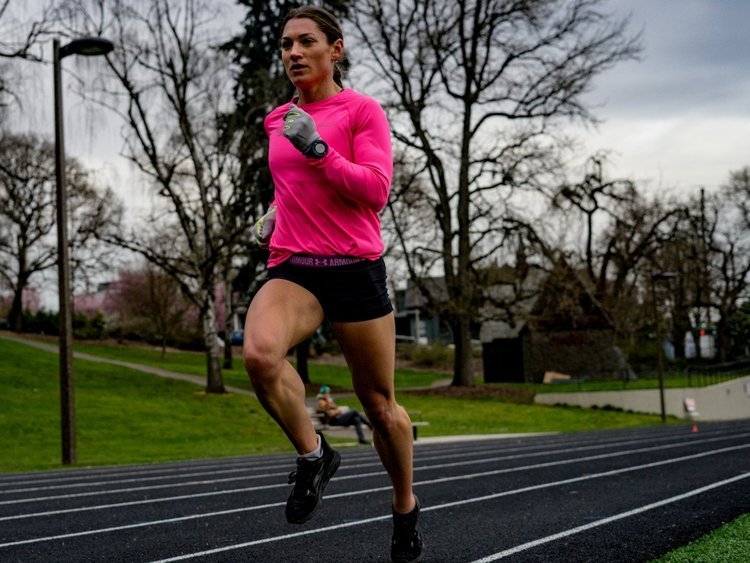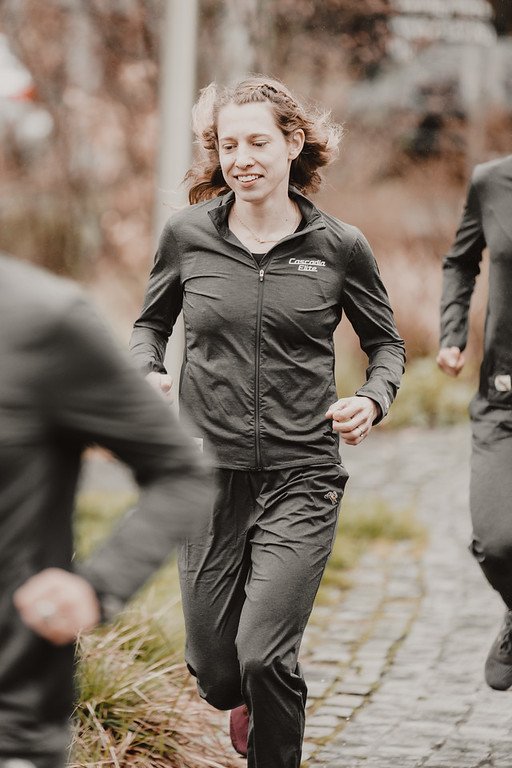Bridging the Gap Between Hobby Joggers and Pro Runners
After running competitively for four years in college, you finally graduate. You aren’t running at the elite level, but you aren’t ready to hang up your spikes. What options do you have?
It might seem like once college is over, so is your running career. When I graduated last spring, I thought this was the case. I sat in a lawn chair in my backyard, contemplating my options: I could transfer to a D1 college, join a pro team, or become a hobby jogger.
While the thought of running road races that revolve around drinking beer sounded appealing, I wasn’t ready to give up competitive racing just yet. My reservations about being paid to run prevented me from taking the other two routes.
So how could I continue running at a high level?
After almost a year of trying to figure out the answer, I had the opportunity to talk with five D3 runners who successfully navigated the post-collegiate running scene.
Now members of the newly formed Cascadia Elite team, these women share their post-collegiate experiences to highlight alternative paths to becoming elite runners.
What is Cascadia Elite?
After talking with the Cascadia Elite athletes, I see that my post-collegiate running experience isn’t unique.
From Marci Klimeck’s perspective, there is no support for athletes in the space between hobby joggers and pro runners. If you are running at a high level, you can join a team and get supported, and there are many groups dedicated to running for fun at any level. Yet, there is “a big gap in the middle” when supporting runners striving to become world-class.
Since many existing teams on the west coast do not have space for non-professional elite runners, it makes sense to start a non-professional elite team. And yet, it is hard to find enough women in one geographical area that want to train at a high level.
A group of talented runners on “little islands” across the pacific northwest had this problem last year. As they wondered how they could support each other without being in the same area, Travis Floeck and Marci Klimek decided to found a remote team, now known as Cascadia Elite.
Cascadia Elite’s mission is to “create a community of runners who support and empower each other in the holistic pursuit of excellence.” They believe in the power of bringing people together around running.
Photo Credit: Timothy Healy - Cascadia Elite during a photo shoot
Klimek noted that Cascadia Elite had been shunned from both directions. Being competitive at a high level, their team makes groups with general membership uncomfortable, and not being pro means they don’t receive backing. She says that this makes it challenging for athletes in this spot to find the support they need to be successful.
This lack of support causes many athletes to feel discouraged from competing post-collegiately. For example, as a D3 athlete, Jenn Randall didn’t even know that she could run track after college. She saw everyone else doing longer road races, so she figured she would too.
To address this lack of support, Cascadia Elite serves as a platform to help post-collegiate athletes get the information they need to be successful. They have recently started offering free webinars as a resource for runners.
The team hopes to create space and opportunities for people who aren’t running as their job. While Tracksmith supports their team, each athlete is not contracted. This means that although the athletes are elite, they are not professional runners.
The Cascadia Elite team aims to bridge the gap between pros and hobby joggers. While the team is still relatively new, they are excited about the generosity and support they have received so far and look forward to spreading their mission.
Meet the D3 Elites
Each athlete took a unique and unconventional path to join the Cascadia Elite team.
According to Klimek, there is no rule dictating how to be a successful runner. While social media shows runners doing certain things, she believes that “your path is yours,” and every runner should do what is genuine to them.
And yet, awareness about the resources and options available to runners is lacking.
As D3 runners, the five athletes I spoke with hope to set an example for athletes to achieve great things without necessarily taking the standard path of running fast in high school, going to a D1 program, and signing a professional contract.
There are other paths to success in running, but it is hard to be what you can’t see. By highlighting their stories, I hope to make different paths visible. Hearing their stories was refreshing, inspiring, and reaffirming—now I know I am on the right path simply because it is mine.
Amanda Phillips
Photo Credit: Timothy Healy
Amanda Phillips graduated from Lewis and Clark College in 2008. Now, she lives in Hood River, Oregon. Her PR in the marathon is 2:35:06, and her goal is to break 2:30.
Marci Klimek
Photo Credit: Timothy Healy
Marci Klimek graduated from Linfield University in 2010. Now, she lives in Talent, Oregon. Her PR in the marathon is 2:30:48, and her goal is to break 2:30.
Amelia Keyser-Gibson
Photo Credit: Timothy Healy
Amelia Keyser-Gibson graduated from Haverford College in 2018. Now, she lives in Seattle, Washington. Her PR in the 3000m is 9:25 and in the 5000m is 16:02. She is looking to run her first marathon and hit the Olympic trials time.
Jenn Randall
Photo Credit: Timothy Healy
Jenn Randall graduated from Ithaca College in 2013. Now, she lives in Eugene, Oregon. Her PR in the 1500m is 4:10.82, and in the 5000m, 15:30. She is hoping to qualify for the US championships this year.
Anna Connor
Anna Connor graduated from George Fox in 2009. Now, she lives in Portland, Oregon. Her PR in the 800m is 2:04.52, and in the 1500m, 4:14.85. She is hoping to qualify for the US championships this year.
You Are Not Alone
After graduating from college, running can feel very lonely. Maybe you’re like me, isolated in a small town, hours away from a running community. Or maybe you have a community, but no one quite gets what you’re trying to do.
When I graduated, I often wondered if it was even possible—can someone have a career and still pursue running at a high level? Am I the only person trying to do this?
Of course, I knew there were other people like me, but where were they? How are they doing it?
Support
When you graduate, you often lose most of the support and resources you relied on throughout college. Unless you are joining a team, you will need to replace this support yourself.
Anna Connor recalls that there is a “gap after you graduate from college if you’re not going straight into the professional world via sponsorship to get any kind of support whether it’s emotional, physical, or monetary.” Despite this gap, she points out there are still many opportunities; it’s just a matter of finding them.
She specified building a support system of people who understand you and your goals. This process involves finding a coach, physical therapist, and others involved in your training and surrounding yourself with supportive people—your partner, family, and community.
Finding a coach that you work well with is crucial. Connor believes that finding someone that can mentor you as both a runner and a person can make or break your training.
Travis Floeck started coaching Klimek a year ago. Klimeck has known Floeck since high school, so she reached out to him when she needed a new coach. From this, she started connecting with other post-collegiate athletes and has benefitted from their mutual respect and support.
One of these athletes was Amanda Phillips. For a while, Phillips was coaching herself and working a full-time job. Seeing how well Klimek was doing in the marathon, she reached out. She thought it would be nice to have a coach and offload some of the work that went toward coaching herself. So far, it has been working well for her.
Aside from finding a coach, Klimek recommends being intentional with the people you surround yourself with. The key to building a support system is finding people who actually support who you want to be.
Teams
One of the best parts of college running is having a team. Having people to train with and cheer for you adds purpose and meaning to the sport.
Amelia Keyser-Gibson misses the team aspect of running in college. She said that scoring points for a team adds an extra layer of motivation in a race, and she finds it valuable to be a part of something larger than herself.
By joining Cascadia Elite, she has gained back some of this team atmosphere.
Photo Credit: Timothy Healy
Even though the team is remote, Keyser-Gibson finds it empowering to have people following her race results and cheering her on. There have been times when she doubted herself. Running can become a costly hobby, and she would wonder: Should I really fly across the country to that race? She thinks having a team helps with “justifying it.” Seeing her teammates chase their goals reminds her that what she is doing is worthwhile.
Similarly, Phillips notes that being on a team reaffirms her self-belief. Seeing her teammates perform well reminds her: “I can do this. I can be at this level.” This visibility is significant for D3 runners, who often don’t see other D3 runners competing after college.
Training can be hard and lonely if you aren’t on a team after graduating. Sometimes, it is easier to get out the door if you know you are meeting up with someone.
Even if you can’t join a team, Klimek recommends reaching out to people for support and connections if you are feeling discouraged. Simply knowing that you are not alone can make a big difference.
Staying Motivated
In college, even if you lack intrinsic motivation, you can “do it for the team.” Being a part of something larger than yourself can add purpose to your training.
But, when you graduate, you often lose that layer of motivation. So how do you stay motivated if you’re out there on your own?
Commitment
Even after joining a team in Boston after college, Keyser-Gibson still often found it hard to get out the door to run. She says that to run post-collegiately, you have to redefine your goals and ask, “why am I still doing this?”
After graduating, she decided to take time to be lax with herself. She questioned her path as a runner, wondering if it was worth the time and money. Now, she is taking running more seriously again, and she is glad that she gave herself the time to decide.
Klimek thinks this type of questioning is important. As a marathoner, she often wonders what she’s doing—what is the purpose? On other days, her purpose is clear, and everything clicks. In this way, the highs and lows balance each other.
Klimek believes that if you want to do it, you can. You can either find solutions or find excuses. By finding solutions, you are committing to your goals.
Photo Credit: Timothy Healy
Having goals helps Keyser-Gibson stick to her training, even when she questions herself. Sometimes, she is looking toward a specific time goal or race. Other times, her goals include micro-wins like running seven days a week.
Phillips is also goal-oriented and believes that smaller goals are “stepping stones” that make training more enjoyable. For her, running has always been about enjoyment, whether she is in shape or not.
Excitement
Keyser-Gibson loves chasing lofty goals, but she also loves just going out for a run. She thinks that having fun is an essential part of training. Sometimes she switches up her races and distances depending on what excites her since excitement drives her training.
Since graduating, she has even gotten into trail running. While it doesn’t always fit into her training for the track or the roads, she finds it fun and a nice mental break.
Similarly, each fast time Randall runs builds positive energy and momentum for her next race. She doesn’t like to set time goals; she just wants to improve. She said, “I really don’t know the limits of what I’m capable of in running, and that really keeps me motivated to keep trying… it’s kind of exciting.”
This mindset is what Connor calls “maximizing the gift.” Connor knows that she doesn’t have the most speed or endurance, but she has a little of both and wants to maximize this to see where she can go.
She also knows that progress takes a long time. Connor recommends that athletes be excited about their progress, even if it isn’t going as planned. Rather than getting upset, she finds it helpful to be more scientific and ask why it didn’t go well.
Sometimes, she says, you aren’t running well because you are “holding on too tight.” Putting too much pressure on results can make training stressful. Instead, you should have fun and ask: “what can my body do today.”
Balancing Work and Running
I’ve always loved running for its simplicity. You need a pair of sneakers and a road to run down. No fancy equipment is required—anyone can run.
And then, they told me about the super shoes. And the physical therapists. And the coaches, trainers, entry fees, plane tickets, hotel rooms…
Running is an expensive hobby.
It becomes an even bigger burden if you are not a professional runner—simple fact: you need a job to pay for your expensive hobby.
Prioritize
Phillips is a middle school health teacher. She knew she wanted running to be a part of her life, but competing at the elite level is expensive, and when she first began teaching, she couldn’t afford it. Between the cost of living, student loans, and debt, her teacher’s salary couldn’t cover travel expenses and race fees.
For a while, Phillips’s job was her priority. For years, she would wake up at 3:30 a.m. to prepare for school, and only if she finished with enough time would she go running.
Teaching gets easier with time, and now she is at a point where she doesn’t have to put in as much time and energy. Now, she can make running a priority.
Photo Credit: Brian Metzler - Amanda after being Top American at the LA Marathon
She says that in college, there is a system in place to push you to be competitive and set aside time to focus on your goals. It is more difficult without time and resources after graduating, but that doesn’t mean it won’t happen. If you want it to happen, she says, “you have to make it a priority.”
Connor thinks of her priorities in terms of energy expenditure. She prioritizes what she finds important and allocates energy accordingly. For her, this means if she doesn’t have time for ten exercises, then she does the four most important ones.
Another way to approach this is by creating a routine. Keyser-Gibson works a 9-5 job as a research assistant and finds that her routine is key to getting everything in. For example, she knows she will do her strength exercises after work, even though she just wants to eat dinner. She says, “You have to make the time for it and decide that you’re doing it.”
Balance
Until this past year, it had been five years since Klimek had run a PR. She says that one reason was failing at time management. Balancing work, running, and life hasn’t always been successful for her.
So far, being on the Cascadia Elite team has helped Klimek improve her time management. She has noticed that she wants to get involved in everything, but now she takes a step back and has learned to say no to things.
Klimek’s routine works well for her as a runner. She works for Massachusetts General Hospital remotely out of Oregon. Since she works east coast hours on pacific time, she has her afternoons free for training and coaching.
For Randall, finding balance is about flexibility. She doesn’t have a rigid routine so that she can adapt her schedule each day. She thinks it is vital to have an efficient schedule, though, so she isn’t wasting her time.
Photo Credit: Timothy Healy
Part of this efficiency comes from the fact that her coach, Peter Stice, is also her husband. Much of her training is also quality time with Stice, the other head coach for the Cascadia Elite team.
Running is just one part of Randall’s life as she is also a physical therapist and youth coach. In this way, she feels like her life is well-rounded and there isn’t too much pressure on running.
She views this balance as a benefit of not being a professional runner. But, she also wonders if she would be capable of more if she had more freedom without other responsibilities.
The D3 Advantage
I used to think that running was an objective sport. Fast times are fast times, and it doesn’t matter who runs them.
Yet, much of post-collegiate running is networking. You need a running resume and exposure to get into meets and heats. Many runners even have agents.
The post-collegiate path is unpaved for D3 runners. The lack of representation of D3 athletes becomes problematic when even runners at the top of the nation are invisible.
On the flip side, Keyser-Gibson feels like most of the athletes she has interacted with in clubs are D1 athletes who had set paths. This difference created a sense of “imposter syndrome,” as she feels like she needs to earn her place.
She doesn’t want to feel this way, and she said, “Just because we ran D3 doesn’t mean we can’t come out and compete with people who ran D1.”
If I were a coach, I would be looking at D3 track to find my athletes. Often, D3 runners have unique paths to running and have yet to reach their potential.
Opportunity
During college, Phillips quit the running team. As a first-generation college student, she attended Lewis and Clark for financial reasons and felt like she didn’t belong at a “ritzy” private college.
Her transition to college was difficult, and she contemplated dropping out. This feeling extended into her experience with the team, ultimately leading her to quit.
Over the summer, she ran on her own and reconnected with her love of the sport. She took the time to get healthy and run for herself.
When she returned to college in the fall, her coach encouraged her to run the first race without pressuring her to rejoin the team. She ended out winning the race, and with a healthier mindset, she was ready to be a part of the team again. She ended out being an All-American.
Phillips is grateful that her coach gave her the space to decide on her own. She also wouldn’t take back the choice of going to Lewis and Clark. She feels she would have been lost at a larger school, and she could have dropped out or been off the team entirely.
Not surprisingly, the other athletes agreed that they might not have run if they hadn’t attended small D3 schools.
Klimek felt she would have been left behind at a large school, so she attended Linfield, where she would have the resources and support to succeed. Even though she was recruited as a soccer player, she ended out running instead.
Connor didn’t start getting into running until midway through her senior year of high school. It was a bit late to improve and get recruited, but George Fox took her in, and she made it to nationals her first year in both cross country and track.
Randall’s high school didn’t even have a track team until her junior year, when she and a few other students made one. She arrived at Ithaca as a soccer player and only ran cross country because she was hesitant about the tryouts. She graduated as an All-American with some fast times on the track.
Longevity
People say many things about D3 running: we run for the sake of running, we have a love for running, we run for fun… As if other runners don’t also experience these things.
I think the difference could be about sustainability, not love or motivation.
In college, Keyser-Gibson didn’t have the type of training where the coach “throw[s] people against the wall and see[s] who sticks.” Since her training wasn’t intense in college, she feels like she still has the potential to improve and have fun post-collegiately.
Keyser-Gibson thinks that part of this sustainability comes from finding balance. Since running wasn’t her only focus in college, she had the flexibility to care about other things.
Klimek agrees, saying that she has never wanted to focus only on running. In her opinion, many D3 athletes stay in the sport longer because they are given the tools to balance their lives with other interests.
Part of this could be that many D3 athletes do not run in college with the hope of running professionally. There is also less pressure on performance and results at the D3 level.
The D3 experience was beneficial for Randall, who believes that running D3 helped her develop a healthy relationship with the sport. Without the pressure to perform or an unhealthy running culture, she has many fond memories of college track. After graduating, she said, “running was still fun. I didn’t feel burnt out.” For this reason, she still enjoys running to this day.
It’s Never Too Late
Even as a D3 athlete, I felt pressure to transition directly to a team after I graduated. I thought it was now or never, and if I didn’t keep moving forward, I would lose momentum.
When I realized that I needed a break, I was worried that I had missed my chance.
After talking with the Cascadia Elite team, I was reassured that I had made the right call. After hearing Phillips’s comeback story, I asked her what advice she had for athletes trying to pursue running, and she said, “it’s never too late.”
Photo Credit: Timothy Healy
Similarly, Randall said you don’t have to put so much pressure on yourself early on. She said, “I think it’s important not to count yourself out and not to think your best days are behind you. You still have a lot of potential as a runner, and if you want to go down the road of pursuing that, you’re probably capable of a lot more than you thought.”
Please share this article with the runners in your life!
